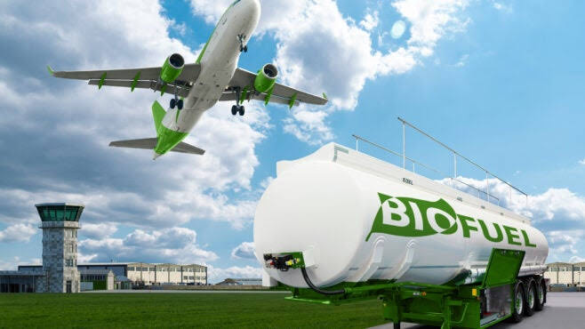The aviation industry is facing a major challenge to reduce its carbon footprint and achieve net-zero emissions by 2050. According to the International Air Transport Association (IATA), sustainable aviation fuels (SAF) can play a key role in this transition, as they can reduce the life cycle greenhouse gas emissions of flights by up to 80% compared to conventional jet fuel.
SAF are alternative fuels that can be produced from various sources, such as biomass, waste, residues, or synthetic gases. They can be blended with conventional jet fuel and used in existing aircraft engines and infrastructure, without requiring any modifications. SAF has been successfully tested and certified for commercial use since 2009, and several airlines have already flown with SAF on selected routes.
However, the global production and uptake of SAF remains very low, accounting for less than 0.1% of the total jet fuel consumption. One of the main barriers is the high cost of SAF, which can be three to five times more expensive than conventional jet fuel. This is partly due to the lack of economies of scale, policy support, and investment in SAF production and distribution.
Africa, however, has a huge potential to become a leader in SAF production and consumption, according to a recent report by the World Wide Fund for Nature South Africa (WWF-SA). The report, which was presented at the 55th annual general meeting of the African Airlines Association (AFRAA) in Uganda, estimated that sub-Saharan Africa could produce up to 4.5 billion litres of SAF annually, following the strictest sustainability criteria. This would be enough to meet about 20% of the current jet fuel demand in the region.
The report identified several feedstocks that could be used to produce SAF in Africa, such as energy crops, invasive alien plants, municipal solid waste, and industrial off-gases. These feedstocks could provide multiple benefits for the continent, such as enhancing energy security and resilience, creating jobs and income, improving waste management and land restoration, and reducing greenhouse gas emissions and air pollution.
The report also highlighted the need for supportive policies and incentives to enable the development and deployment of SAF in Africa. These include the implementation of the Carbon Offsetting and Reduction Scheme for International Aviation (CORSIA), which is a global market-based mechanism to offset the emissions from international flights, and the adoption of a long-term aspirational goal (LTAG) for net-zero emissions from aviation by 2050, which was agreed by the International Civil Aviation Organization (ICAO) in October 2022.
The report urged African governments, airlines, and other stakeholders to collaborate and take action to seize the opportunity of SAF and contribute to the green transition of the aviation industry. It also called for more research and innovation to explore the potential of emerging technologies, such as hydrogen and electric propulsion, which could further reduce the environmental impact of flying.
By producing and using SAF, Africa could demonstrate its commitment to the global climate goals and the sustainable development of its aviation sector, which is vital for the economic and social integration of the continent. As the report stated, “Africa has the potential to leapfrog to a new era of low-carbon aviation and become a global leader in SAF production and consumption.”
Source: Engineering News



